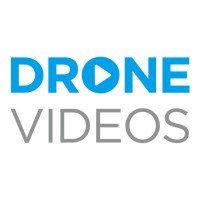
The FAA Modernization and Reform Act of 2012 was enacted to provide the FAA and interested parties with a framework for developing appropriate drone regulatory standards. The Act set a deadline of September 30, 2015, for the regulations to be made public. Over the following decade, the FAA, along with research and development teams within the educational and commercial drone industry, has strived to make the United States a leader in the drone industry, both in technological and regulatory advancements.
The FAA’s Reauthorization Act of 2018 began addressing how drones should be regulated within restricted airspace for safety measures, particularly around airports and government buildings. Along with this Act came the establishment of a new category of drones for consideration: Actively Tethered Unmanned Aircraft Systems. Unlike most of the drones being discussed for safety regulations, tethered drones opened up a whole new world of possibilities for the drone industry. One of the leaders in the development of tethered drone systems is Dr. Sergei Lupashin, a former staff member from the Federal Institute of Technology Zurich.
Dr. Lupashin worked within the university’s Flying Machine Arena since its inception in 2008. The arena closed in 2019, but it served as a launchpad for much of today’s drone industry’s success. As explained on the Arena’s website, “Measuring up to 10 x 10 x 10 meters, the Flying Machine Arena (FMA) consisted of a high-precision motion capture system, a wireless communication network, and custom software executing sophisticated algorithms for estimation and control.” Dr. Lupashin’s work in the FMA led to the founding of his company Perspective Robotics and a tethered drone system called Fotokite.
Dr. Lupashin was inspired by drone photographers who happened to capture images at a protest in Russia in 2011. He was amazed by the impact the pictures had but realized that the convenience of being able to safely fly a drone in an environment with many people left much to be desired. At a TED Talk in 2014, he revealed a simple drone attached to a retractable dog leash that would allow a drone to be safely flown over groups of people so that journalists could document impactful moments.
This was just the beginning stages of the Fotokite. By 2018, Fotokite had won first prize at the world’s largest UAS accelerator program, GENIUS NY. With offices in Zurich, Boulder, CO, and Syracuse, NY, Fotokite has proven itself useful beyond journalistic endeavors and has become a critical tool in the public safety sector. As emergency services like police, fire, and search and rescue departments have begun to heavily rely on drone technology, tethered drones like Fotokite have made niche operations safer and quicker to undertake.
As explained on the company website, “Fotokite Sigma provides public safety teams with mission-critical situational awareness from elevated perspectives. Fotokite’s actively tethered drones conserve personnel by launching, flying, and landing with the single push of a button; no piloting required.” Recently, the FAA passed the Securing Growth and Robust Leadership in American Aviation Act (FAA Reauthorization) of 2024, which specifically grants greater freedoms for the use of tethered drones.
Under this new reform, tethered drones are exempt from some of the regulations placed on free-flying drones. One of the biggest changes is that when using a tethered drone, such as Fotokite, an operator would not need to be a Part 107 licensed drone pilot. For many emergency departments that rely on volunteer services, this is a game-changing reform. This would allow smaller emergency operations to utilize critical drone technology while on a minimal budget. Tethered drones would also be exempt from needing pre-flight authorization, meaning they could be launched instantly without first waiting for FAA mission approval.
Furthermore, tethered drones will now be allowed to fly in restricted airspace. For example, if emergency personnel need to have aerial situational awareness outside of the White House, they now can with a tethered drone. Of course, there are some restrictions, such as the requirement for the drone to be flown at a maximum altitude of 150 feet and remain in the visual line of sight of the operator at all times. Fotokite was pivotal in helping the FAA come up with this new regulatory path. Their website goes on to proudly state, “Fotokite Sigma is authorized and recognized by aviation authorities as a safer alternative to non-actively tethered and free-flying public safety drone systems.” As drone technology continues to evolve, the introduction of new regulations, particularly for tethered drones, represents a significant advancement in ensuring both innovation and safety.



